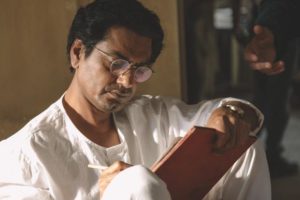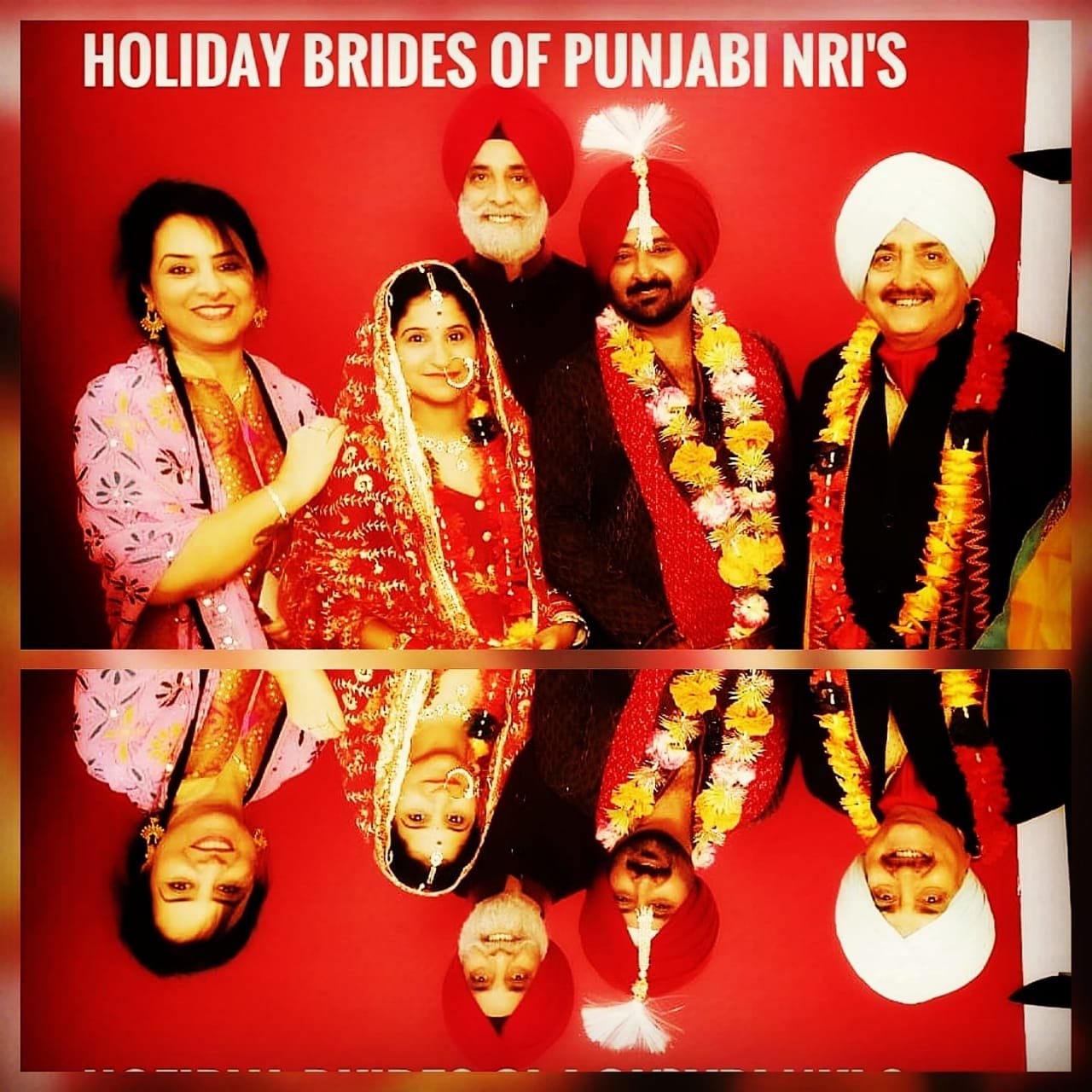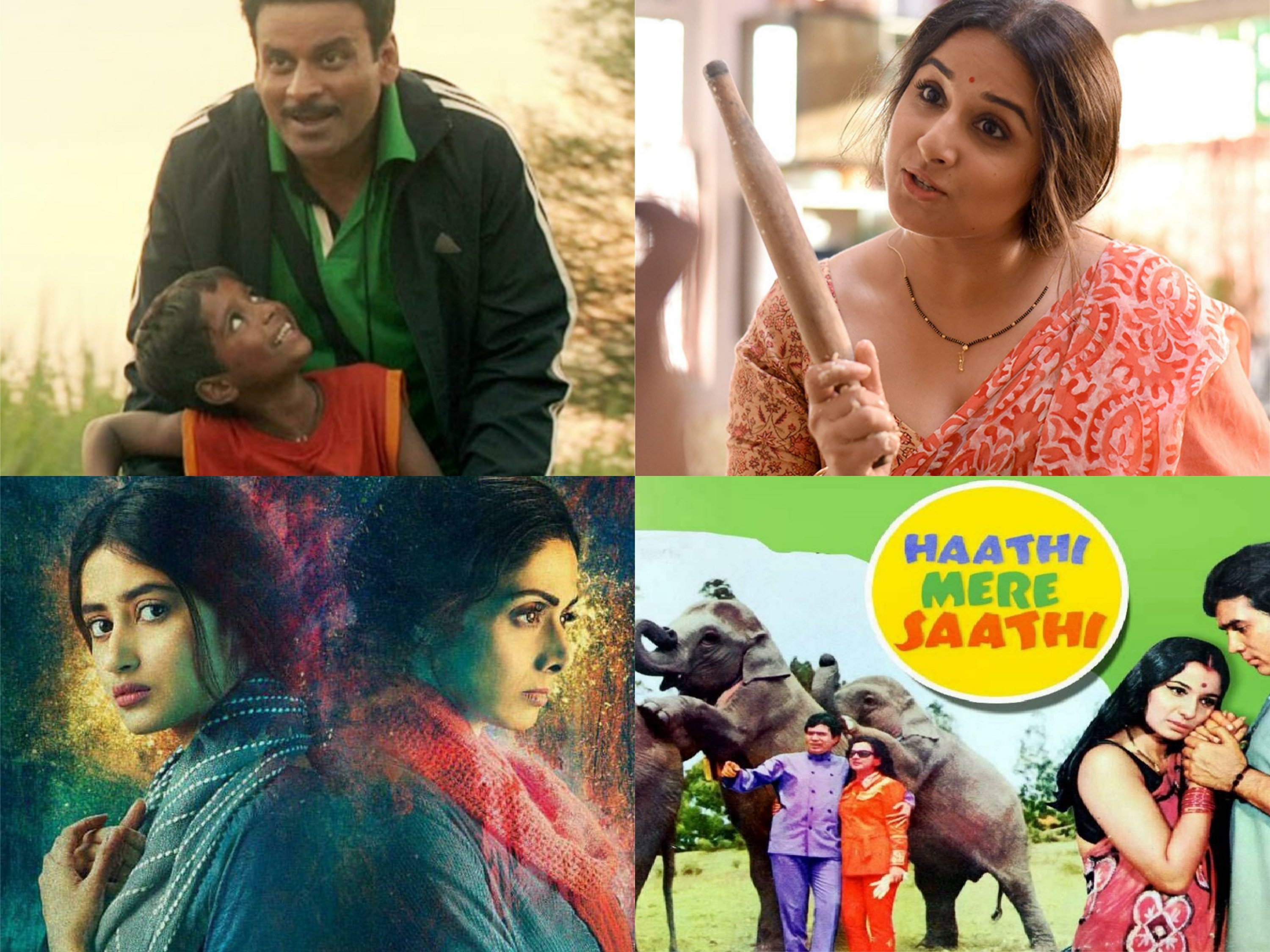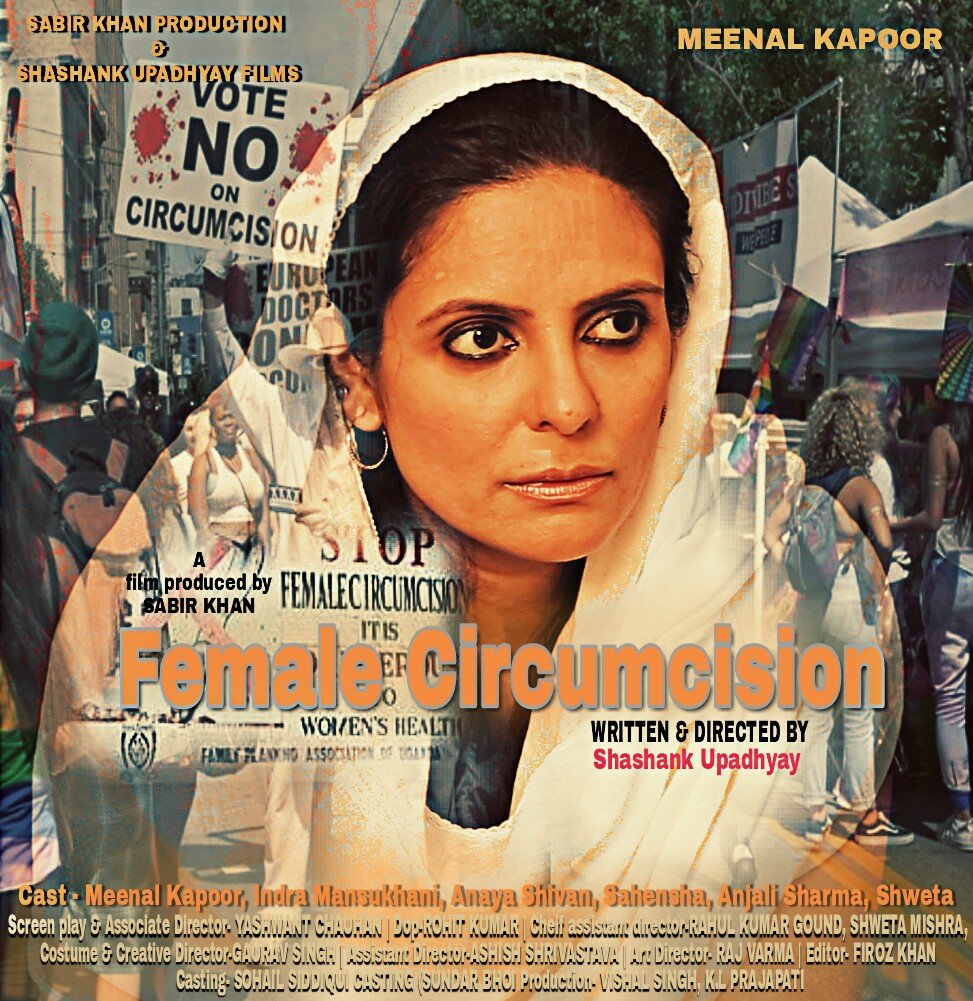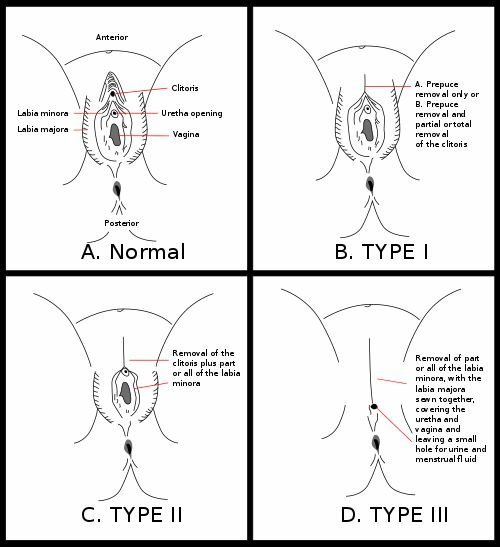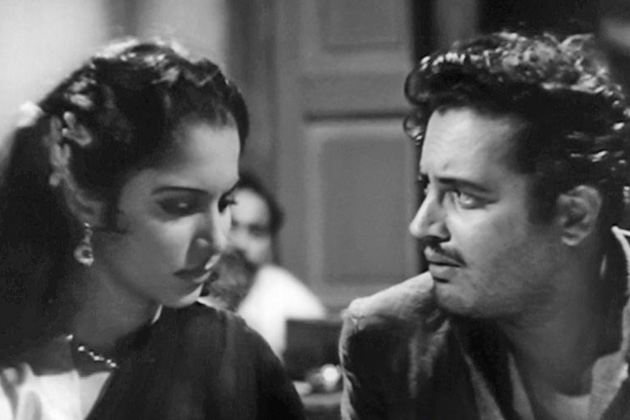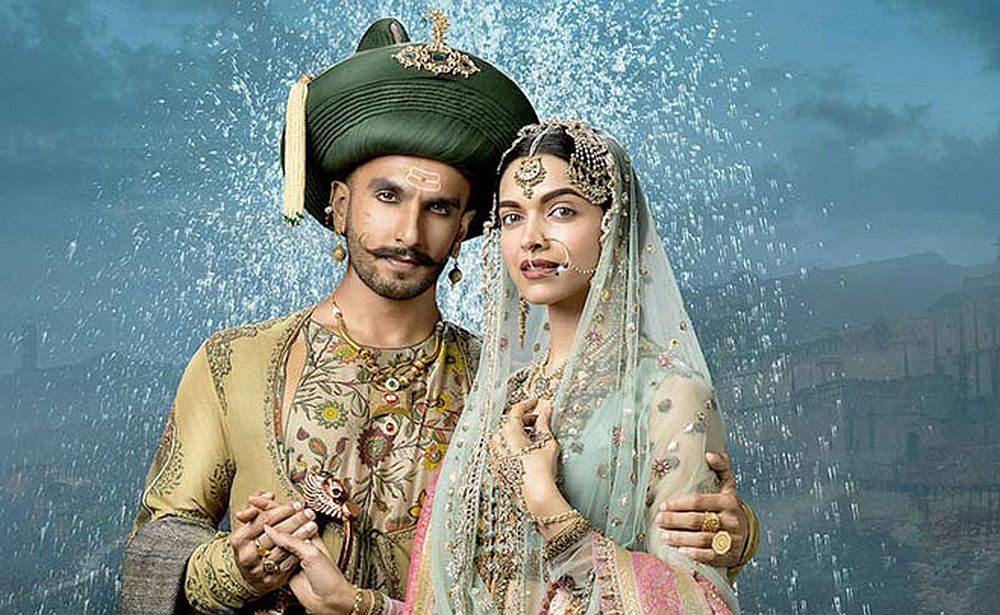Water is both a word and a many hued idea. Its presence along with oxygen is crucial to life on Earth. Considering that India is a land of many rivers, water does not figure prominently in Indian cinema either as an image or a metaphor, save for the work of a few film-makers most notably Ritwik Ghatak and Jahnu Barua, not to forget Ramu Kariat.
It is amusing and instructive to note that the first two are from the East: Ghatak born in East Bengal and the product of the cinema of West Bengal because of the partition of India in 1947, Barua, a native of Assam and Kariat, the third director from Kerala, a land also blessed by nature with many waterways and water bodies and mercifully spared devastating floods that are a yearly occurrence in Assam and Bengal.
Each director is, so to say, the product of his environment. In Ghatak there is an ancient grieving that refuses to go away; messages of hope seem to come only as an after thought. In Assam, peasants are largely at the mercy of nature. Barua’s characters stoically accept any hand destiny deals them.
Kariat’s characters go through great tragedies usually against a beautiful backdrop of water. Star-crossed lovers from a poor fishing community in Chemmeen, are found dead on a beach, a calm sea bears witness to this tragedy. In Dweep (Island) water is a recurring motif to highlight the contradictions within people who are marooned within themselves as they are on the island.
Arriflex of West Germany designed a rugged, portable motion-picture camera that was to revolutionarise film production. Indian producers too imported this expensive instrument but rarely allowed it to be used in inclement weather, fearing damage, and much worse, loss. It was after all an expensive piece of equipment-by Indian standards. Ritwik Ghatak, a reckless character by temperament, risked his own life and that of his associates to get what he wanted. In Ajaantrik (1957) he shot in pelting rain, and over unfriendly terrain to get powerful visuals. He was obsessed, not with cosmetic perfection as many of the Hollywood directors of his time were, and continue to be so, to this day. His quest was for the correct emotional note. Film making for him was like composing music.
This gambler’s streak was evident when he shot Titash Ekti Nadir Naam (A River Called Titash), his comeback film in 1972 in Bangladesh. Since water was the driving force in both, the eponymous novel by Advaitya Malla Burman and Ghatak’s script based on it, he would stake everything to get the absolutely necessary visuals to make what is generally considered his last great film.
Hindi cinema rarely used water as a leit-motif. Only in song picturisation did it play a significant role. Guru Dutt, in his first film, Jaal (The Net, 1951), had coastal Goa as his location. It was a crime thriller with an obligatory moral ending. Four songs, two of them memorable, have the sea as an integral part of their camera choreography. Pighla Hai Sona Doore Gagan Meye (Molten Gold Lights The Far Horizon) was filmed at dusk with fishing boats returning home after a day at sea, and their presence add imperceptibly to the romantic mood of the song. Yeh Raat Yeh Chandni Phir Kahan (On A Glowing Moonlit Night This, Memories Nudge And Stir The Heart), has judiciously selected sea images and convincing B/W photography to simulate moonlight. Maria (Geeta Bali) a simple, giving Catholic girl pines for Tony (Dev Anand) her absent lover. Hemant Kumar and Lata Mangeshkar’s singing, Sahir Ludhianvi’s lyrics and Sachin Dev Burman’s composition together create an unforgettable experience.
Tony, fleeing from the police, tries to board in swirling waters a boat that will take him to safety, but is unsuccessful. As he is arrested and is being lead away, Maria offers him her own crucifix in forgiveness. Love, however inadvertently, triumphs over greed.
Bimal Roy was the other director from Hindi films to use water as a poetic symbol in some of his films but only in songs, while observing intelligently the conventions of commercial cinema. In Madhumati (1957), a ghost-romance written by Ritwik Ghatak, the song Suhana Safar Aur ye Mausam Haseen (Such a Joyous Journey, Such Sweet Weather), has brief shots of mountain Springs that eloquently bring out the male protagonist’s euphoric state of mind. He also used water images in the heart-rending climax of Bandini (The Captive-1963) when the heroine fresh out of jail fortuitously hears of her consumptive revolutionary lover’s presence on board a steamer that is about to leave. She is disturbed because the man is inadvertently responsible for all her woes in the past. Just as the steamer sounds its final departure, she rushes out of the passenger shed, down the gangplank to scramble aboard and embrace her man and her own destiny. Together they embark on a journey of self-discovery with courage and conviction. Here the director uses the river as a witness and a catalyst, in the making and shaping of events that give meaning to life. Need one add that this overwhelming scene is punctuated by Sachin Dev Burman’s haunting rendering of O Re Maajee Morey Saajan Heye Uss Paar…(My Love Waits On The Far Bank, Quick! Get Me Across O Boatman) based on an East Bengali folk air.
Jagte Raho (1957) directed by Shambhu Mitra and Amit Maitra for Raj Kapoor’s R.K. Films banner was a decisive breakthrough, although an extremely short-lived one, from the company’s earlier mushy, pseudo-socialist productions. Directed by two worthy former members of IPTA (Indian People’s Theatre Association) the culture wing of the undivided Communist party of India, it was the first serious attempt by commercial Hindi cinema to use water as a metaphor.
In it a peasant (Raj Kapoor) comes to the metropolis of Calcutta to find work. Hungry, penniless, alone he tries to get a drink of water from a public tap and is chased away by a policeman who thinks he is a thief. He runs into a block of flats and discovers in his nightlong flight from State tyranny what corrupt and dissolute lives most of the tenants lead. Throughout the night he is chased by a group of vigilantes who obviously represent extra constitutional authority much like the R.S.S. He finally quenches his thirst at dawn given water by a devotee (Nargis) from her kalash (bell metal pot) who sings Jaago Mohan Pyaare (Awake My Beloved Krishna! The New Sun’s Rays Kiss Your Brow) set to Salil Choudhury rousing music and Shailendra’s words that subtly alter the traditional Bhajan to suit the socialist ideal. The hunted peasant finds dignity, courage and self-worth in this the final sequence of the film.
Water, quite simply, represents the dignity of the Have Nots, the collective, in Jagte Raho; it also stands for the need for justice, social and political, and a more humane way of life. The adroit serio-comic treatment that the directors give the film entertains the viewer while making him think. That it came exactly after a decade of independence from British rule is no surprise. The Nehruvian ideal was already a spent force and Big Business was raising its ugly head. A film that called for a reconsideration or reclamation of lost values was in order, and that water, something you do not deny even an enemy when he is parched, should act as a catalyst for bringing all right minded people together in their quest for a decent, equitable society was the confirmation of civilised ideals.
Jagte Raho was the only Hindi film where water had been used so powerfully as a political symbol. It was the most distinguished production of R.K. Films. But other films by the same banner with Raj Kapoor as director, as opposed to this one in which he was only the producer, use water solely as a romantic, sexual image usually with considerable technical skill. Unforgettable is the picturisation of the song Pyaar Hua Iqraar Hua… (The Heart Chooses, The Heart Exults, Why Is It Then Afraid Of Love) from Shree 420 (1954).
Nargis and Raj Kapoor, in his Chaplinesque tramp avatar, give lip synchronisation on camera to this exquisite (the adjective is appropriate) melody sung by Manna Dey and Lata Mangeshkar, composed by Shankar-Jaikishan with lyrics by Shailendra. The artistic intent is direct. The two protagonists huddle under an umbrella in steady rain at night and the intention is to bring them together in matrimony. Raincoat-clad little children walk past the couple to reinforce the idea. Since the duo is not a part of the privileged classes the pictorial suggestion is of a happy, socialist future for them with lovable children of their own like the ones just shown. On camera, a line from the song Hum Na Rahengeye, Tum Na Rahogeye, Rahengeye Yeh Nishaaniyaan [Gone! Gone! We Will Be Forever Gone! Our Love Shall Take Seed, Go On…] bolsters the idea lyrically.
Hawa Meye Urtaa Jaaye Meraa Laal Duptaa Mulmul Kaa (My Red Mul Mul Scarf Flutters gaily in The Breeze) from Raj Kapoor’s first big hit Barsaat (Rain) in 1949 captured the imagination of the youth in newly independent India. The Song composed by Ram Ganguly, based on Raga Pahadi, continues to be heard and appreciated fifty five years later. It was erroneously credited to Ganguly’s two assistants Shankar and Jai Kishan, who teamed up to become a legendary duo of Hindi Film Music. The melody was picturised on Nimmi, one of the two female leads in the film and an actress who projected intensity, sensuality and vulnerability in a heady mix. The other actress was the gifted, sprightly Nargis. The picturisation of Hawaa Meye…. contained images of Nimmi by a gushing mountain stream that were playful, innocent and sexual and flattered both men and women in the audience.
In later years, after Nargis, the glowing actress-star and inspiration behind R.K. films left, the artistic quality of the productions dropped noticeably. There was a marked deterioration in the use of water imagery from Jis Desh Meye Ganga Behti Heye (1961) to Sangam (1964) and then the fall came with Satyam, Shivam, Sunderam. By the time Raj Kapoor made Ram Teri Ganga Maili (1986) blatant carnality had come to dominate his sensibility so completely that it was difficult to believe as a young man he had so deeply moved a large viewing Public with films that were genuinely felt if, a trifle sentimental.
It is interesting to note that most of the filmmakers who used water as a part of their cinematic conception in Hindi films were from the eastern region. The Bengali Shakti Samanta, used the Hooghly in Calcutta, albeit for song picturisation in Amar Prem. In an earlier film Sawan Ki Ghata, he picturised a song by a gushing river tributory in the Himachal. Aaj Koi Pyaar Se (A Stranger Came By And I Fell In Love, The World Stood Still And I Moved On) is remembered almost forty years later as much for its cinematic rendering as for O.P. Nayyar’s composition and Asha Bhonsle’s melodious, singing that had a flowing, feminine, erotic quality.
- Aravindan’s Esthapan (Stephen-1979) is one of the most intriguing films to be made in Kerala. Esthapan, is an elusive vagabond with the gift to heal and to prophesize. He is, predictably, a suspect in the eyes of the Church and many of the flock. It is even suggested that he traffics with the Devil! But the truth is quite different.
Without resorting to any special effects Aravindan evokes his much loved character’s innocence, transporting humanity and ability to suggest magical happenings, by photographing him from almost ground level from an elevation on the beach as he “emerges” out of the sea. He achieves the illusion by compressing the perspective with a telephoto lens so that Esthapan appears to be bobbing in and out of the waves.
Water is used in the film to cleanse and bless as if to suggest divine sanction. Christianity here has a folksy, local flavour though technology has made its inroads and traders of various kind have a visible presence. The local priest, contrary to all expectations is a champion of Esthapan and his humane qualities. The sea helps Aravindan to introduce the right tone of ambiguity to skirt or indeed subvert useless ideological debate and sustain the mystery that makes his hero so endearing.
Pather Panchali(1955) was the first Indian film in which rain became a memory-image. Apu and Durga, two siblings, dance in pouring rain to express their joy, and so become, at one with the elements. Ironically, it is Durga who catches pneumonia and dies in their decrepit village home in Nishchindipur. Rain, in Satyajit Ray’s hands becomes both giver and destroyer. There is a sense of the inevitable about the rain sequence, a poet’s intuition about the cycle of life and death. Never again did Ray in his long and illustrious career create such moments, where life revealed its complex workings so simply.
It is true that he did use water as a metaphor occasionally in his films later but never as spontaneously as in Pather Panchali. His reference to water as a cinematic idea thereafter became oblique, even sly. Aparajito, the second part of the Apu trilogy, was filmed in Banares, through which the holy Ganga flows. The most ancient of rivers figures only in a few sequences. First, it is seen in the background as Apu’s father Harihar, a brahmin, preaches to Hindu widows on the steps of the Ghats on its banks, and then, more dramatically as he lies dying and his wife Sarabajaya sends little Apu running to fetch a Ghoti (a small bell metal pitcher) of holy water to perform his last sacrament.
Jalsa Ghar (The Music Room-1958) opens majestically. Bishambar Ray, a paupered zamindar is seen lounging in an easy-chair on the terrace of his crumbling mansion with the immense Ganga in Murshidabad far in the background. The broken landlord asks of his faithful servant: “What month is it Ananta?” Unwittingly, to be sure, the picture of endlessness suggested by the retainer’s name and the panoramic sweep of the river become one at that moment.
Unlike Ray, Ghatak was a reluctant city man; the partition of India forced him to become one. His relationship with the city of Calcutta, now Kolkata, was one of love and hate, in equal measure. Until his tragic and untimely death in 1976, Ritwik Ghatak, remained at heart a boy from the riverine culture of East Bengal, where there always was a surfeit of water, the dominant colour in nature, green in its myriad shades, and there was the promise and, indeed dream, of bloom and fulfillment. The presence of water, thanks to these formative experiences became integral to his cinema.
There is a long, comic sequence in heavy rain in Ajantrik (1957). Bimal who drives a 1920 Chevrolet as a cab in rural Bengal is engaged by a bridegroom and his eccentric uncle to drive to the bride’s for the wedding. The jalopy gets stuck in slippery mud and Bimal gets his two passengers to push it as the rain pours down relentlessly. The scene, in retrospect, seems to be a droll comment on the marriage that is soon to take place, and for that matter, most marriages in this world. Rain affecting human lives by chance, or atleast, influencing it in some mysterious way, is indicative of the paradoxes that are at the heart of human existence.
Titash Ekti Nadir Naam came at a time when his health and morale had been broken by years of unemployment, alcoholism and often near destitute conditions. He had in his dark period tried to make Manik Bandopadhyay’s immortal novel, Padma Nadir Maajhi (The Boatman of Padma) into a film but his drinking prevented producer Hitin Choudhury from investing money in the project. The offer from Praan Katha Chitra in Dacca was a godsend. He understood, perhaps better than anyone else the all important role water was to play in Titash…. It was the very reason for its existence. He had also to maintain the spirit of the novel by a journalist who belonged to the uprooted fishing community portrayed in it. Reshaping the narrative to express his own vision of life in telling images and sound became an obsession.
The story of a river changing course to influence, change and even destroy a fishing community, robbing it of its source of sustenance and dignity, for him, a betrayed leftist flung on the debris of history, perhaps unconsciously, if not sub-consciously, represented all humanity paupered by a conspiracy of businessmen, big and small, working in tandem with equally corrupt politicians. Water, arbiter of human destiny is used as a leitmotif. On occasion it is a giver and sustainer and at others a destroyer: one by its presence and the other by its absence. Everybody who is a part of the fishing community that lives on the banks of the river Titash is beholden to her-water is feminine in Indian mythology-for his livelihood.
Ghatak’s version of Titash… is soaked in water for more then three-quarters of its running time. It begins with shots of rain and boats out fishing, some of them trying to get back before a killer storm overtakes them. The black and white photography captures almost tactile images of water. Absence of colour is a blessing here because it helps concentrate the image, and that done, to invest it with an abstract quality.
H2O is a physical reality in most of the shots, and, an ever-changing metaphor as well. Things come a full circle when Basanti, betrayed by fate, time and hence history, lies dying on Titash’s dry river-bed clawing at sand to draw just enough water to perform her own last sacrament. Both, the hopelessness, and the tragedy in the scene are real. One is left asking is that all there is to life, endless sorrow and unremitting struggle for existence?
It is a relentlessly tragic film-the only one in the eight that Ghatak completed. Even overwhelming tragedies like Subarnarekha and Meghe Dhaka Tara have brief moments of lightness and laughter. The folk song accompanying the opening credits attempts to unify the entire goings on between earth and sky with water between the two. It is water that changes its form in accordance with the laws that govern nature. The lyrics also suggest how important fish is to a fisherman providing him with food and livelihood. ‘What happens when a river changes its mood and withdraws its bounty? is the song’s rhetorical query. A note of foreboding is introduced in anticipation of an unavoidable tragedy that nature will bring upon fishermen to wipe them out as a community.
His vision of life was as engagingly contradictory as his personality. In his films many people accept fate and fight it at one and the same time. The visual metaphor would be swimming against the current. The idea gains credence taking his Barendra Brahmin background into consideration. His cussedness, his iconoclasm, his awareness of the nourishing aspects of tradition all added up to a delightful contradiction both in the man and his films.
It was certainly not possible for him to be a fatalistic Hindu like his cinematic forebear Debaki Kumar Bose whose tear-drenched Sagar Sangameye (Flowing Into The Ocean, 1958) was a hopeless tragedy about people desperately seeking divine redress for their woes in the material world.
Water in this film shot in the Sagar islands in West Bengal, served only to accentuate the pain of the poor. Ghatak’s own awareness, largely intuitive, of the limitations of Marxism and the salutary effects of mysticism, together, forced him to passionately embrace life with all its existential problems and paradoxically, to maintain a certain distance, in order to understand and appreciate its workings.
Jahnu Barua, the filmmaker from Assam trained at the Film and Television Institute, Pune, has a remarkably clear, levelheaded view of life. Assam is a province that has suffered violence continuously in the last twenty years. Various warring tribal factions and militant separatists there have made life extremely difficult. Extortion and murder are an everyday reality, as is divided loyalties amongst families with members involved in different political activities. The Indian government’s use of continuous terror has added fuel to the fire and, not one whit of clarity towards an understanding of the situation or the needs of the people.
The magnificent Brahmaputra flows through the land unmindful of the passing hopes and sorrows of human beings who inhabit it. It is an illustration of nature’s grand indifference to human folly and greed; of its complete impartiality as witness to man’s succumbing to his own selfishness. Barua’s characters have to fend for themselves, like the old peasant and his orphaned grandson in Hrhagoroloi Bohu Door (Far Away Is The Sea).
The story is quite simple really. An old, relatively poor peasant lives with his grandson in a hut on the banks of the Brahmaputra. Life is difficult, money is scarce and age is catching up. He is worried about the future of the child, who, he feels has it in him to make good. He takes him to his successful younger son living in Guwahati, the state capital. He feels his grandson deserves a proper education, which will equip him to enjoy all that life has to offer. Returning home to a lonely existence, he soon receives a letter from the boy asking to be taken back to the village because he is deeply unhappy at his uncle’s house. The old man goes despite thinking that the young one is cooking up a story to return to his former carefree life in the village. To his shock and surprise he finds his grandson being treated as a servant by his aunt, with the tacit approval of his uncle. He returns home with his charge to face life bravely and with full faith in natural justice.
Water imagery is cleverly used to capture hidden nuances in many scenes. They suggest without appearing to, the reverberation of each hurt, each humiliation similar to the last, but somehow different. Time of day, Quality of light in keeping with the season, come together to articulate what words cannot. Most of the time the Brahmaputra looks brown and muddy likes the lives of the grandson and grandfather. Then suddenly as the most knotty problem in the old man’s life is resolved when he decides to do his best to bring up the boy, the light suddenly acquires a glowing, honeyed quality. Even the river literally reflects glints of hope. Barua’s film, like the man himself, comes to grips with life and its complexities in the most disarming and straightforward manner.
If Barua is simple and dignified, Ghatak is complex and turbulent. His water imagery is deceptive though not misleading. There is a clinging to the body of moisture, and a feeling of wetness in the air. This is especially true of Titash… as it is of certain parts of Meghe Dhaka Tara (1960). Visuals and sounds are full of interpretative possibilities in Ghatak’s films.
Nita, trying to leave home in a heavy downpour after learning of her tuberculosis, carrying a childhood photograph, and, being discovered and stopped just in time by her singer brother, is an attempt to erase her past and along with it herself, from her ungrateful family’s memory. Carrying away a memento in the rain in the hope of making a fresh start actually suggests an ending. Her attempt fails and, her caring brother quickly takes her to a sanitarium in the Shillong hills in Assam.
Every scene in the justly famous extended last sequence in the film is photographed under a cloudy sky, promising rain. When Nita, after hearing of all the good news about the family members including her little nephew who has just learned to walk, cries out, “Dada I want to live!” the camera goes “dizzy” and right afterwards, a montage follows, of water gently trickling down a hillside soon succeeded by a shot of a flock of sheep coming down a slope shepherded by a boy. Tinkling of bells is heard, and just after, a plaintive song about Uma (Durga) returning home to her husband’s, is carried on the soundtrack. Water in its short visual appearance represents among many things, perhaps a sudden effulgence in a life that has been devoted to and sacrificed in, the service of family, the most dynamic and ironically, destructive of social units.
Interpreting a work of art is always retrospective, and a task fraught with peril, more so if it is a film by a filmmaker as idiosyncratic and alert as Ghatak. His stories usually verged on the banal, even if their source was distinguished. He had a way of reducing the original to the basics and then adding myriads of visual and aural complexities. He used water in many forms to depict states of mind of his characters, to take the narrative forward, to make a comment and, possibly, as a poetic abstraction. These qualities are best illustrated in Komal Gandhar (E-Flat-1961), which has very many shots of the river Padma at Lal Gola; heavy rains over landscapes and many sequences under cloudy skies.
Titash…., however is quite different from any other film of his; it is part nostalgia and part prophesy. As a child growing up in lush green, East Bengal with its endless waterways leading to rivers flowing into the sea, he was able however intuitively to grasp the joys of a slow, more humane way of life. There was then enough for everyone’s need but not for everyone’s greed, to quote M.K. Gandhi. The senseless slaughter that led to the partition of British India put an end to it. Titash… mourns the loss of such a society.
Memory images from his childhood stayed with him all his life. In a sense his entire cinema was about lost innocence and about journeys in search of a retrieval and a renewal. Here, in Titash… there is a sense of conclusion, although he does show a child running through a paddy field at harvest time blowing a leaf whistle. The land once belonged to the fishermen but the river changed course. Businessmen in collusion with corrupt Government officials took it over, had them forcibly evicted and then rented it out to tenant farmers.
Ghatak’s approach to cinema was essentially anti-decorative. His films can be compared to stone carving or sculpting where the artist chips away in search of the unexpected. Rajen Tarafdar, a communist fellow traveller and a fine commercial artist from advertising like Satyajit Ray, though not as gifted or well organised, despite his genuine intentions, was seduced by an urged to decorate in his second fiction film, Ganga (1958). Shot after shot, lovely to behold but without a cohesive place in the storyline, taken by Dinen Gupta, also Ghatak’s cameraman, made the film work, of course unintentionally, like a documentary on the lives of the (so-called) fisherman shown in it. They were after all actors playing a role.
Steering a film’s dramatic narrative smoothly had never been Tarafdar’s forte, rather, he found his touch in the accumulation of tiny details and their juxtaposition with and against each other. His films fell into place accidentally. When they did not; they petered out. Water in Ganga is its raison d’etre. But the introduction of a gratuitous female character in the second half completely upset the film’s balance. Ghatak summed it up in his usual forthright manner: “It was like sprinkling a few drops of cow piss in a bucketful of wholesome milk.”
Titash… had its own demands. The novel’s spirit had to be retained without cluttering up the screen with too many characters and sub-plots. Water was of paramount importance because it ruled and shaped people’s destinies. Crucial scenes took place in the ‘presence’ of water: either on it or nearby. Kishore, the virile young fisherman, to whom Basanti had pledged herself when they were children, looses his new bride to dacoits who raid his boat at night, as it drifts slowly in midstream.
Kishore and Subol, both childhood friends, and fishermen travel by boat in company of Tilak, their senior, from island to island on fishing expeditions. On one such trip, Kishore marries the gently beautiful woman who comes to be known as Rajar Jhee. He comes to her over water to take her away from her parent’s house, and, is deprived of her over water, when, to avoid dishonour, she throws herself overboard and is found later in an unconscious state floating in with the tide. Is she a gift, a benediction or a harbinger of tragedy?
Kishore returns home deranged. . Subol dies after some years; time is stretched to the borders of cinematic credibility- with the arrival of Rajar Jhee, a pre-pubescent boy in tow. She has sailed on for years in the hope of finding a husband whose name she does not know. Memory here is like a river, whose presence and reliability is taken for granted but is seldom so in reality. As in a picaresque tale with a moral edge, Rajar Jhee, who knows neither her husband’s name nor his home, begins to take care of the bearded madman who has so far been in Basanti’s charge.
On the auspicious day of Magh Mandla, when young girls ask the Gods for suitable husbands, Basanti and Rajar Jhee take the mad Kishore to bathe in the waters of the Titash. In keeping with rural Bengali custom Rajar Jhee is now known as Anantar Ma or Ananta’s mother, because of the son conceived a decade ago in blissful union with Kishore at her parent’s.
As they lead the troubled man to the water, the soundtrack plays a Vaishnav Kirtan suggesting that Kishore and his lost bride have the same affinity for each other as Radha and Krishna in myth and legend. A completely senseless fight takes place and kishore and his wife are mortally wounded. As they roll into each other’s, arms in the wet mud, in a flash of lucidity, he recognises her, then dies. As if by divine order, she too dies. Waves from the river wash over their bodies. Water, at this moment, comes to represent time-endless, faceless, detached, the liberator from the pains of existence.
Penniless Basanti looks after the deceased couple’s orphan son Ananta, facing stiff opposition from her parents and several other neighbours. The boy sees a vision of his dead mother as Goddess Bhagavati, a manifestation of Durga, source of all creative energy in Hindu mythology. As she looks at her son with sad, kind eyes, she silently beckons him to join her. There is rain in the air. Soon she will be a memory, a vision of motherhood reaching back to the beginnings when humankind experienced the first stirrings of its own creative potential.
Basanti is incensed when Ananta leaves one day but others around her are relieved, as if of a burden. He becomes a handyman in a fishing craft. She sees him again, during a festive boat-race and tries to bring him back, when he turns away from her she calls him an ungrateful cur. Human beings change course like rivers, only their reasons are different: in the first case it is psychological and in the second, geological.
The starving fishing community is quite easily evicted. Prolonged hunger usually breaks human will, however stubborn. One of the women declares, “I am going to the city because I want to live.” What kind of fate awaits her can only be imagined. This scene recalls a similar one in Satyajit Ray’s Ashani Sanket (1973), on the Bengal famine adapted from Bibhuti Bhushan Bandopadhyay’s novel. A famine in 1943 Bengal happened despite a bumper harvest. The British, fearing a Japanese invasion let it. Five million lives were lost. In both films hunger drives women to take desperate steps: in Titash… because of nature withdrawing its bounty; in Ray’s film despite it. Since the river has gone away in another direction, it no longer exists, not even in name. It may belong in the collective memory of the living but shall slowly fade away after their death. An analogy that comes to mind is of evaporating moisture.
Ghatak’s earlier films were about arrivals and departures that promised a new arrival. Titash… is a farewell, and there is no looking back over one’s shoulders. There is a moving forward but not towards a new horizon as in Subarnarekha. The movement here is outward and, the dispersal of grief horizontal, over a seemingly endless, benign landscape.
A year before he was offered Titash…, The war for liberation from Pakistani rule was on in Bangladesh. Ghatak, native son of East Bengal was busy shooting Durbar Gati Padma, to bolster the war effort, whatever that may mean. It was the strangest film of his career: confused, listless even indifferent. But whenever he focused his camera on his beloved river Padma, his pride as an artiste returned. The visuals are exquisitely composed, and the presence of water, in retrospect, seemed to cleanse him, and make him whole again.
Indications of art being still alive in a mind and body much abused by alcohol were clear but they found rousing confirmation when he got to shoot Titash…. Seeing huge stretches of water with his own eyes and then, through the view finder of the 35 mm camera fitted with a 16 mm ultra wide-angle lens, which he later claimed to have filched from his producers, his dormant creativity was reawakened.
His last film, Jukti Takko Aar Gappo (1971-74) was an anti-climax. Four excellent sequences not withstanding, it was a wordy, boring film. There was however, a flash back sequence in which the protagonist, an alcoholic played by Ghatak himself, remembers happier times with his wife. It was a scene by a waterfall in Shillong, where lovemaking is symbolically reenacted with a song to match in the background. The scene works, for all its quaintness, more so because the actors, are middle-aged trying to recapture their youth, and water is there only to help conjure up the past, perhaps an imagined happiness, or, possibly real.
His acquaintance with Sanskrit and classical India was made in his father Sudhir Chandra Ghatak’s library but most of what he knew of folk culture came from an arduous apprenticeship in the field. What he understood of time and its cinematic interpretation came from childhood experiences and perhaps, even earlier, from race memory. There was a constant tug-of-war between the classical and the folk in his personality and his work. In the classical world the past is a point of reference, like the ancient river Saraswati that is believed to run underground in the Punjab; the present is alive in the moment and the future, a part of eternity. In the folk tradition the past, the present and the future all exist on the same plane as part of a single indivisible body of water that flows into the ocean. In all of Ritwik Ghatak’s films, save Titash…, life exists palpably, simultaneously, as a memory, an immediate happening and a projection of hope into the unknown. Ambiguities hidden underneath tragic certainties make Titash an exception. A playful little boy with a leaf whistle at harvest time appears just before Basanti’s death. It is a wrenching revelation of a cruel natural process. However, seen in totality Ghatak’s films do suggest a resurgent humane consciousness. Recurring water images encourage this view.
Myths are born in People’s culture and get refined and transformed as they make their way into more intellectual and exclusive company. Ghatak had dreamt of filming the eighth canto of Kalidas’s Kumara Sambhava and written a detailed script in preparation. His approach had been elemental and water figured prominently as sustainer and inspirer of life.
Other filmmakers before him have also used water as a metaphor in their work. Robert Flaherty, Irish-American documentarist and one of cinema’s most enduring lyric poets did so in two films: first in Moana (1925) a South Sea Saga, when cinema did not speak and then in ‘Man of Aran’ (1934) five years after sound had come in. Joris Iven’s ‘Rain’ also a Silent, had people reaching out for their umbrellas after a screening on a sunny day. Andrei Tarkovski, undisputed genius of post-war Soviet Russain cinema used water to great effect in his films. Although, his intensely poetic imagery was often too private and dense for most viewers, it was crystalline in the last but one reel (in colour) of his B/W masterpiece, ‘Andrei Rublev’. Shots of ponies grazing by a pristine stream are indeed memorable. Having said that one would still insist that there was hardly a director in modern cinema with Ritwik Ghatak’s fecund imagination in using water as a metaphor in a body of work.
